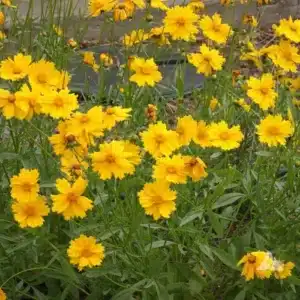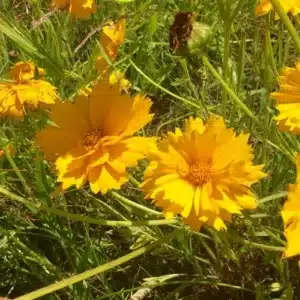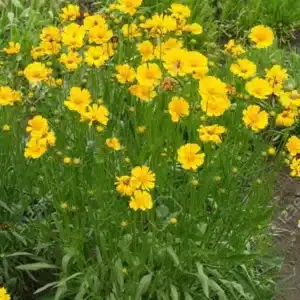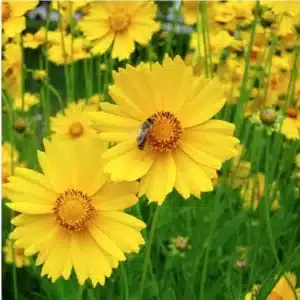Lanceleaf Coreopsis






To propagate and plant Lanceleaf Coreopsis, begin by obtaining seeds or cuttings in late spring or early summer. When using seeds, sow them directly in moist soil, covering with 1/8 inch of soil. Keep the area well-watered until germination, which typically occurs within 2-3 weeks. When propagating from cuttings, cut several 2-4 inch segments from healthy, non-flowering stems. Remove the lower leaves, dip the cut end in rooting hormone, and plant the cuttings in well-draining potting medium. Keep the medium consistently moist and provide indirect sunlight until new growth appears. For planting, choose a location with full sun exposure and well-draining soil. Dig a hole large enough for the root ball, place the Lanceleaf Coreopsis in the hole, ensuring the top of the root ball is level with the soil surface. Backfill with soil, press firmly around the base of the plant and water thoroughly. Thereafter, water moderately, keeping the soil damp but not waterlogged. To promote bushier growth and more blossoms, pinch back the tips of the plant in early spring. Regularly remove dead flowers to encourage continuous blooming throughout the season. This perennial plant often self-seeds, requiring minimal maintenance once established.
Begin care for the Lanceleaf Coreopsis with well-drained soil in a location that receives full sun. Regular watering during the first growing season will establish a deep, extensive root system, but allow the top few inches of soil to dry out between waterings. To promote blooming, remove spent flower heads. Apply a slow-release fertilizer in early spring, and ensure optimum growth by dividing clumps every 2 to 3 years in early spring or late summer. Keep a watch for disease and pests such as powdery mildew, rust, and aphids. Remove and discard affected foliage from the plant and surrounding ground to reduce disease spread. Provide good circulation around the plants to decrease disease susceptibility. In the fall, refrain from any major pruning other than removal of dead or damaged stems. To protect it in winter, apply mulch around the base of the plant without covering the center to prevent rot. Remove the mulch at the beginning of spring and monitor the plant for any winter damage or infections and treat accordingly. The decisive care leads to continuous blooming of the Lanceleaf Coreopsis throughout the appropriate seasons.
Annually
Remove old flowers
The Lanceleaf Coreopsis, with its cheerful golden flowers, can be susceptible to diseases such as powdery mildew, which appears as a white powdery fungus on the leaves or rust, indicated by brown pustules underneath the leaves. To prevent diseases, ensure good air circulation, avoid overhead watering, and regularly clean up fallen leaves to avoid fungal spores accumulating. Treat diseased plants with a suitable fungicide. As for pests, aphids are small insects that can cause curled or stunted growth, and their honeydew deposit can lead to sooty mold. Use insecticidal soap or neem oil to control them. Slugs and snails may eat the leaves and stems of the Lanceleaf Coreopsis, and these pests can be managed by handpicking or using organic slug and snail bait. Caterpillars, another possible pest, can be identified by their feeding damage or the presence of silk webs, frass, or the pests themselves. These too can be handpicked, or treated with a Bacillus thuringiensis (Bt)-based insecticide. Lastly, watch out for blackened roots or wilted leaves, symptoms of a root rot caused by poorly drained soil. The affected plant must be removed to avoid the disease’s spread.









